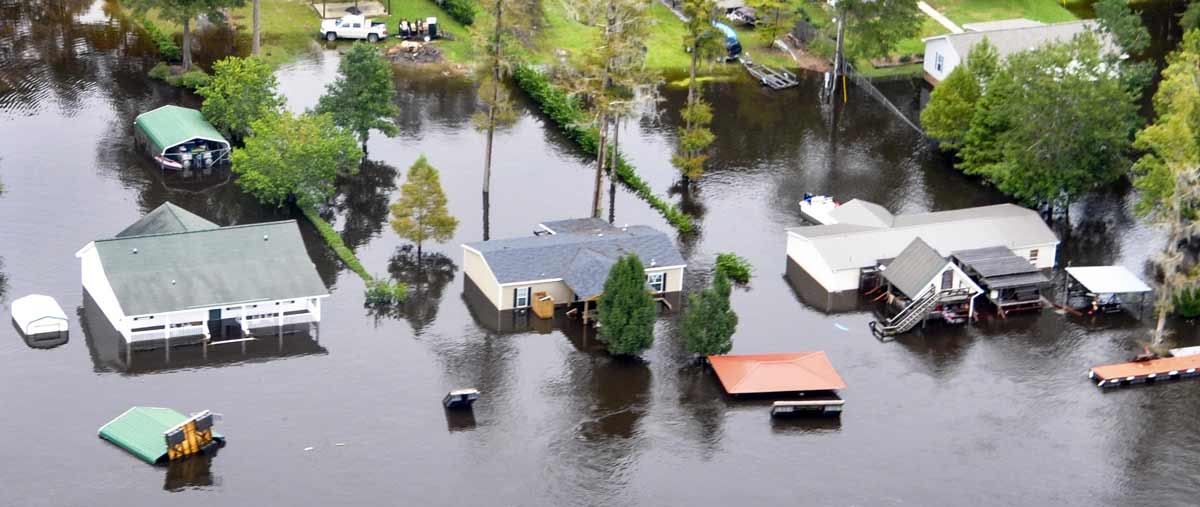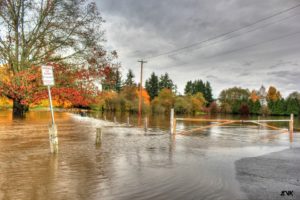 People are calling it “the thousand-year flood.” The rainfall that hit South Carolina earlier this month set records all over the state, as Hurricane Joaquin flooded entire towns and wreaked incredible damage to homes, cars and businesses. According to The Weather Channel, while anything official will take months to announce, the unofficial state record for 5-day rainfall set in 1908 was all but obliterated by as much as 10 inches in a dozen reporting sites. Spots in the coastal cities of Mount Pleasant and Charleston saw 27.15 inches and 23.76 inches, respectively, between October 1 and October 5, 2015.
People are calling it “the thousand-year flood.” The rainfall that hit South Carolina earlier this month set records all over the state, as Hurricane Joaquin flooded entire towns and wreaked incredible damage to homes, cars and businesses. According to The Weather Channel, while anything official will take months to announce, the unofficial state record for 5-day rainfall set in 1908 was all but obliterated by as much as 10 inches in a dozen reporting sites. Spots in the coastal cities of Mount Pleasant and Charleston saw 27.15 inches and 23.76 inches, respectively, between October 1 and October 5, 2015.
Hundreds of state residents fled to 25 open shelters, as others abided by a mandatory curfew at the tail end of the storm. Nineteen dams failed during the rain or in its aftermath, and officials expect damage from floodwaters to reach into the billions of dollars.
“We haven’t had this level of rain in the low-country in a thousand years—that’s how big this is,†said South Carolina governor Nikki Haley, who declared a state of emergency on October 1 in advance of the impact. President Obama did the same, issuing federal aid to help with the state’s recovery.
While the rain has stopped, the devastation has not. As one-story houses saw standing water reach more than halfway up their outside windows, the storm has left behind a slow-burning catastrophe as residents assess property destruction and home looting, tear up water-logged floors, fight growing mold on wet walls and evaluate beachside erosion.
One of the very worst parts of it all is this: Flood damage is not typically covered under standard homeowners insurance. And while homeowners and renters without specific flood insurance may have access to federal funds under FEMA’s individual assistance program, the financial aid will be mostly short-term.
How were they ever to expect this kind of rain? As the governor pointed out, it was unprecedented. The majority of people affected didn’t have flood insurance because, frankly, they were unaware they’d ever need it. Some weren’t even sure it was available to them since they don’t live in a “flood zone.â€
Yet, flood insurance is available to all, homeowners and renters alike. Flood insurance for a home may cost around $200 a year, getting more expensive in high-risk areas. With the devastation a flood can cause and the limited funds the government may have available, it’s a smart choice to add this coverage if you have property assets to protect.
Even if you don’t live in an area you think is at risk from overflowing tidal waters or heavy rainfall, floods actually occur from many incidents. There’s melting snow and ice, hurricanes or truly unexpected storms. And, sadly, these kind of storms do happen. As Marshall Shepherd wrote in Forbes, the reference to a “1,000-year flood†event doesn’t mean we’ll see it once a millennium. The statistic actually refers to the odds of such an occurrence; a “1,000-year event has a one in 1,000 or .1 percent chance of happening in any year.â€
It’s important to note, too, that flood insurance can’t be a last-minute decision. Typically, you’ll find there’s a 30-day waiting period on a new policy.
In the wake of South Carolina’s recent flooding,many residents have unanswered questions about coverage. Wherever you are, please feel free to call us today for any insurance needs —especially about the affordable premiums available on flood insurance policies that will keep your property and contents covered.
The information in this article was obtained from various sources. This content is offered for educational purposes only and does not represent contractual agreements, nor is it intended to replace manuals or instructions provided by the manufacturer or the advice of a qualified professional. The definitions, terms and coverage in a given policy may be different than those suggested here and such policy will be governed by the language contained therein. No warranty or appropriateness for a specific purpose is expressed or implied.


